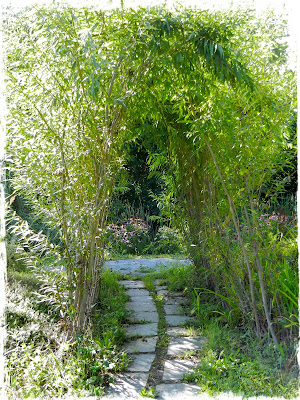My husband was already out on the river, and I went out as soon as the pizza came out of the oven. I don't usually take my good camera on the river, but boating season officially begins tomorrow, and I thought I'd take advantage of this last day without any boat traffic to do some river photography on a particularly colorful evening.
I didn't see my husband anywhere, so I decided to paddle north to visit my favorite tree, Patrick Cottonwood. I photographed this male cottonwood tree extensively last spring and shared the photos with my kindergartners. They named the tree Patrick (after a starfish character in the SpongeBob cartoon) because at one point it looked like the tree was sprouting starfish.
Dazzled by all the changes the male and female cottonwood trees go through during the course of a year, I fell in love with Patrick, in particular. I noticed recently that the majority of trees lining the riverbank opposite us have been marked with fluorescent orange paint. I'm not sure exactly what fate is in store for the marked trees, but I wanted to see if Patrick had been marked - and was relieved to see that he wasn't.
I floated around under Patrick Cottonwood for several minutes and then decided to cross the river to observe the female cottonwood opposite Patrick (named "Fluffy" by last year's kindergartners). When I paddled across the river, I could see around the bend - and was alarmed by what I saw.
The fourth season of the Hudson River PCB dredging project officially began yesterday, and it's much closer to home this year than we had anticipated. Knowing where the project left off last year, we figured we'd have another year before the mechanical dredges appeared in our stretch of the river.
Wrong! After 20 minutes of leisurely paddling along my usual route, I was face-to-face with dredging-related operations.
 |
| View from the road, in operation |
A bit further ahead, there was a huge dredging barge that sounded like it was in operation.
 |
| Closeup from the road |
The massive project, which spans 40 miles of the river between Fort Edward and the Federal Dam at Troy, is nearly halfway to the goal of removing 2.65 million cubic yards of PCB contaminated sediment from the mud in the bottom of the river. A 200-mile stretch of river from Fort Edward to the Battery in Lower Manhattan was designated by the Environmental Protection Agency as a federal Superfund Site in 1984. It is one of the nation's largest hazardous waste sites due to PCB contamination. For 30 years, from 1947 to 1977, General Electric dumped an estimated 1.3 million pounds of PCBs into the river before PCBs were banned by the Federal government in 1979. In 1976, the Upper Hudson was closed to fishing because the fish were so badly contaminated with PCBs. Sportfishing on the Upper Hudson (i.e. between Hudson Falls and the Troy dam) was reopened in 1995 on a catch-and-release basis only.
There is much controversy surrounding the Hudson River dredging project, which is being watched worldwide. I became familiar with the pro-dredging argument more than a decade ago when I accompanied my husband's band to Clearwater's Great Hudson River Revival festival, where they performed for a number of years. I didn't come in contact with opposing viewpoints until we became part of the river community five years ago. As a river resident, I have concerns about airborne PCBs during dredging and the resuspension of PCBs in the water resulting from toxic sediment (that had sunk into the river bottom) being stirred up by the dredging. The EPA claims that the air and water quality is very closely monitored on a daily basis to fall within conservative limits and that there is hard data to show that fears regarding air and water quality are not manifesting. Rumor has it that an air quality monitor will be installed in our yard.
I, personally, have trouble trusting any agency with a political agenda - even the EPA - when my family's health is concerned. However, it is a complicated issue, and since I am not a scientist, I do not feel qualified to take a side. Dredging takes place 24 hours a day, six days a week, for about eight months during the year. Having it in front of our house will be a huge inconvenience, and we have talked about finding alternative housing during that time. However, personal inconvenience is ultimately trivial if this project really can improve the health of the river ecosystem in the long run. I sincerely hope it will. The river runs not only through Eastern New York; it also runs through generations. When I listen closely with my heart, I believe that the river wants the PCBs removed. And when I watch migratory birds like great blue herons and egrets feasting on contaminated fish, I realize there are no boundaries to the contamination. But I guess the best solution is to begin at the source.
May this project be blessed and bring forth blessings that will endure for many generations. And may businesses and people all over the world stop dumping poison into our rivers, oceans, and other bodies of water, thinking it's a convenient, invisible solution. All life on this planet is interconnected by water and air. Our collective survival depends on the quality of both. Contaminated fish are like canaries in a coalmine.
---------------------------
© Susan Meyer and River Bliss, 2012-2013. Unauthorized use and/or duplication of this material, including all photos, without express and written permission from this blog’s author/owner is strictly prohibited. Excerpts and links may be used, provided that full and clear credit is given to Susan Meyer and River Bliss (www.riverblissed.blogspot.com) with appropriate and specific direction to the original content.


















































